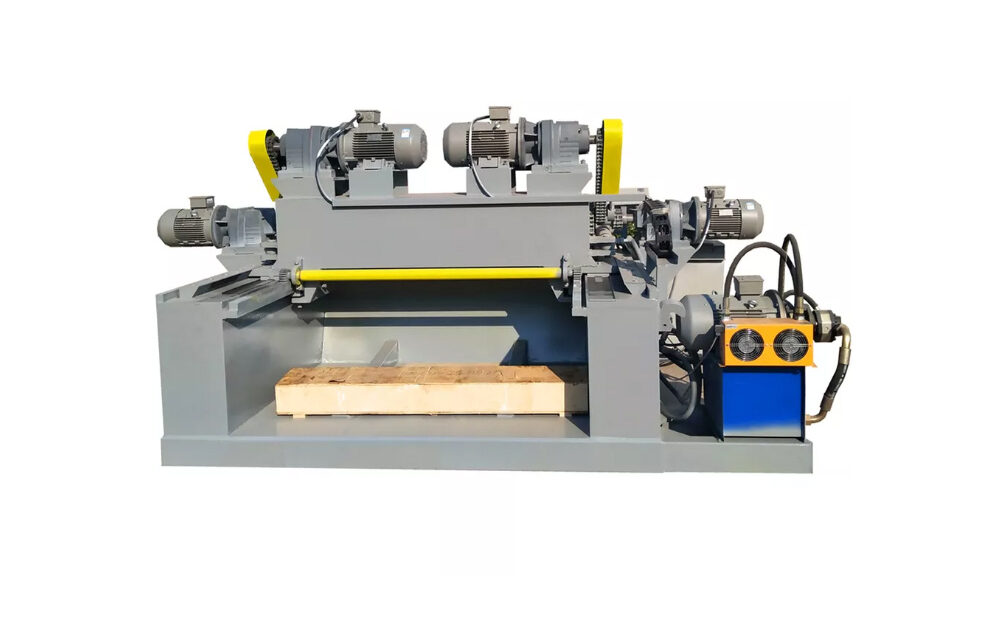
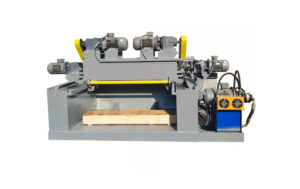
Suitable Wood Types: Eucalyptus, Pine, Rubberwood, Kayu Sengon dari, Birch, Poplar, etc.
Veneer Thickness: 0.8mm – 4.0mm
Blade (mm):1500*180*16
Clipper width(mm):>= 400 mm
Rotary Cutting Speed: 30–80 meters per minute
Maximum Log Diameter: 500mm
Minimum Log Diameter: 26mm
Machine Dimensions: 4000 × 2300 × 1600 mm (Length × Width × Height)
Machine Weight: 6.5 Tons
Motor Power
Length of the Roller(mm):1500
Power of Double Roller(kw):7.5kw X 2
Power of Single Roller(kw):7.5kw X 2
Power of Screw Feed(kw):11kw
Power of Rotary Clipper(kw):1.5kw
Power of Rubber roller (kw):1.5kw
Total Power(Kw):44kw
Reducer
Roller Reducer:Helical Gear Reductor X 4
Screw Feed Reducer:Helical Gear Reductor X 1
Clipper Reducer:Worm Gear Reducer X 1
Rubber Roller Reducer:Worm Gear Reducer X 1
Control Unit:
PLC + Touch Screen(Peeling Speed Adjust System
Closed loop Servo control)
Automatic Knife Gap Adjustment
Automatically adjusts the knife gap to ensure consistent cutting thickness and improve precision.
Automatic Knife Tightening
Keeps the knife securely fastened during operation, reducing manual adjustments and enhancing safety.
Automatic Lubrication System
Delivers timely oiling to key components to reduce wear and extend equipment lifespan.
Monitoring System
Provides real-time data on machine performance, helping detect faults early and improve efficiency.
Log Debarker
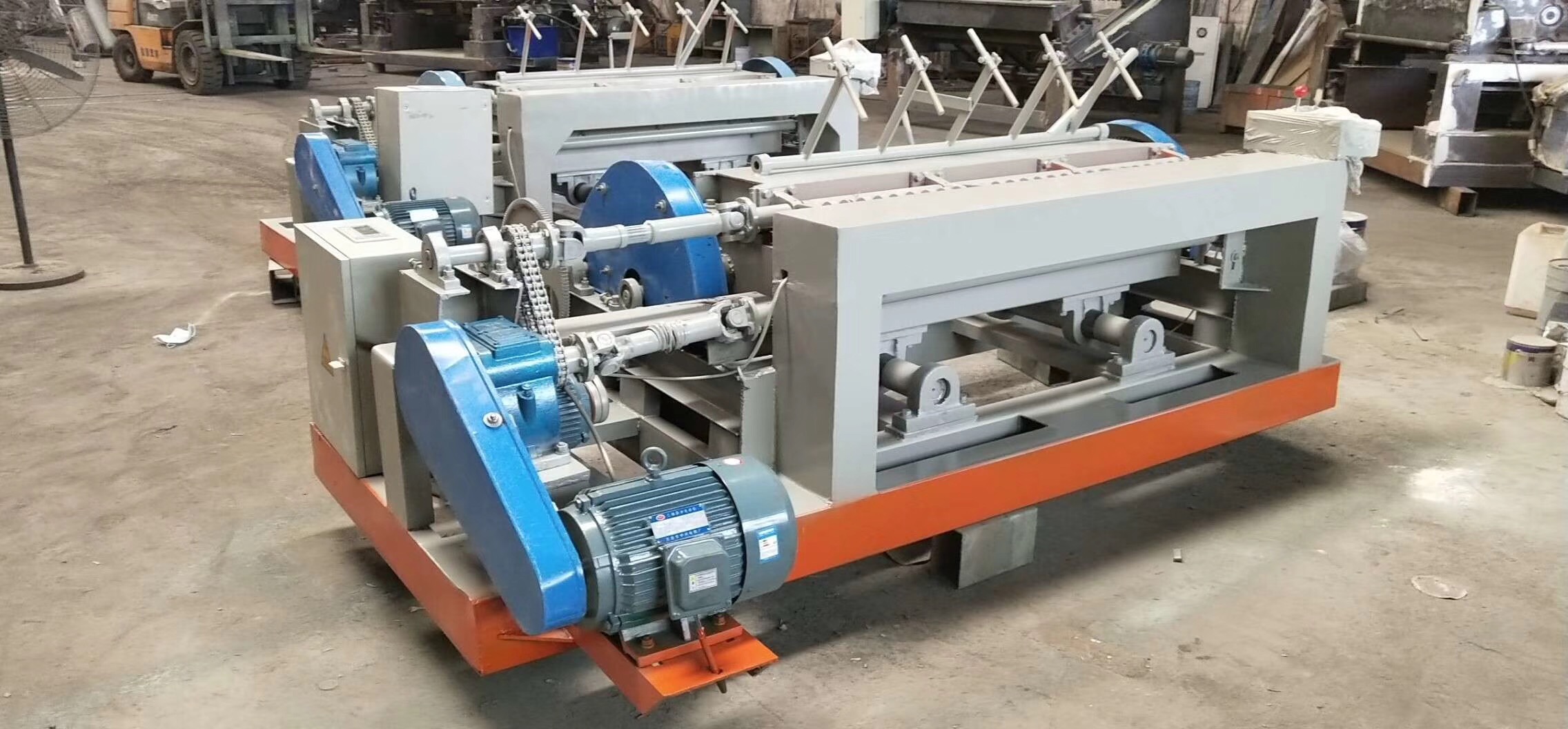
Log Loading Conveyor
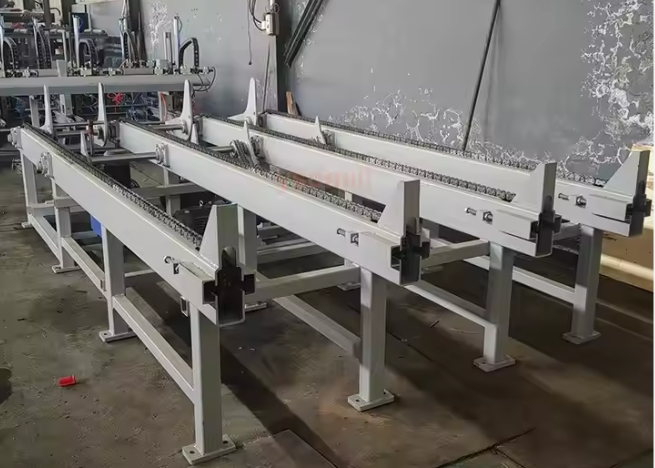
the Veneer Stacker
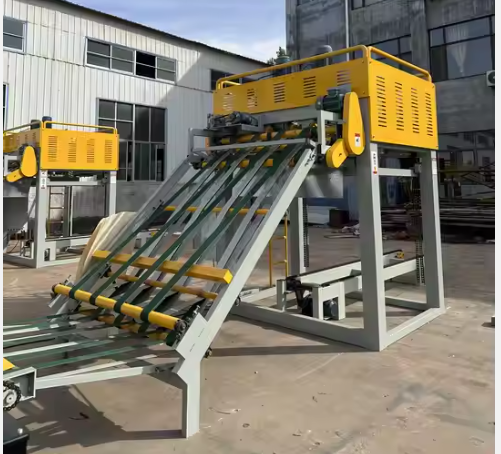
Peeling Knife Grinder
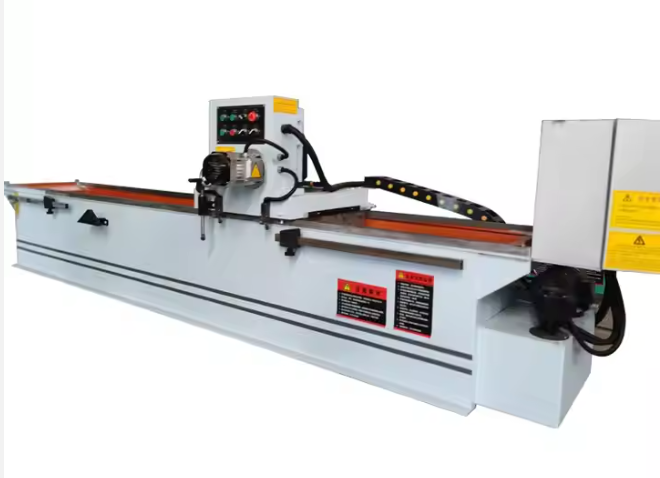
1. How to Get High-Quality Veneer
Select the Right Logs
the logs should have proper diameter, suitable moisture content, and no signs of insect damage, rot, or cracks.
Use the Right Rotary Peeling Machine
Choose the veneer peeling machine with the high-quality motor, precision knife holder, adjustable pressure system, automatic control system, and sharp blades.
Set the Peeling Parameters Correctly
Properly adjust veneer thickness, knife gap, peeling speed, and lubrication to match the wood type.
2.Why do different types of wood need different rotary peeling machines?
Because different woods have different hardness, thickness, and texture, the machines need to be adjusted or designed differently to cut the wood smoothly without damaging it. Using the right machine helps get better quality wood veneers and lasts longer.
3.What should be confirmed before choosing a rotary peeling machine?
Type of wood to be processed
Is it poplar, eucalyptus, birch, pine, or rubber wood? The density and hardness of the wood determine the knife holder, motor power, and overall machine structure. For harder wood, a heavy-duty model with a cast iron frame is recommended.
Log diameter range
Are you processing small logs (30–300mm) or large logs? The diameter affects the maximum opening size between the double rollers.
Required veneer thickness
Common range is 0.3mm to 3mm. Thin and thick veneers require different machine precision levels, which impacts screw types and mechanical configurations.
Daily production requirement
High output requires faster rotary speed and automatic feeding/unloading systems to improve efficiency.

Hi, I’m Luna, Head of Sales at Guoyu. My team and I would be delighted to learn more about your specific requirements and support your plywood production.



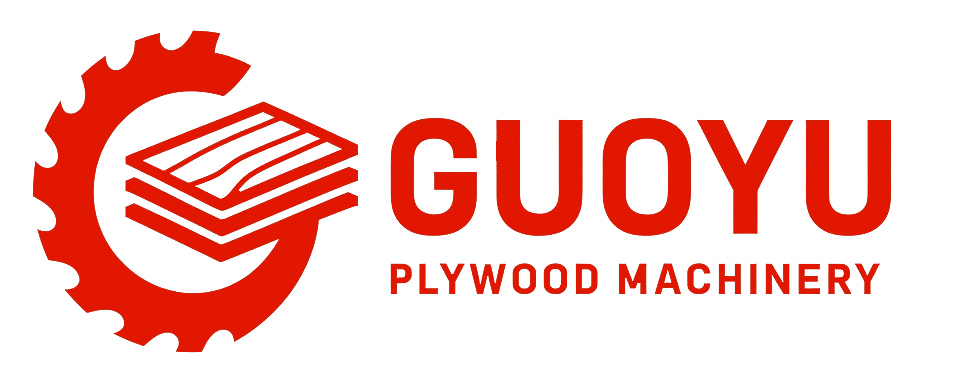
*We respect your confidentiality and all information are protected.


I’m Leo, the head of sales team at E-abel. Me and my team would be happy to meet you and learn all about your business, requirements and expectations.



*We respect your confidentiality and all information are protected.

lunamachines@outlook.com
Yitang Industrial Zone, Lanshan District, Linyi City, Shandong Province, China



*We respect your confidentiality and all information are protected.

Hi, I’m Luna, Head of Sales at Guoyu. My team and I would be delighted to learn more about your specific requirements and support your plywood production.


